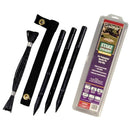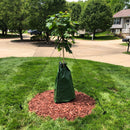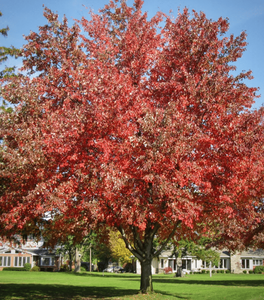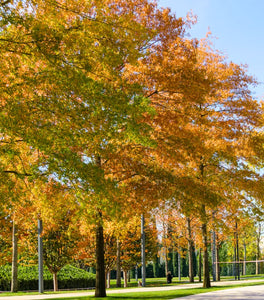
Images Depict Mature Plants
Tulip Poplar Trees for Sale Online
The Liriodendron tulipifera, better known as the Tulip Poplar Tree, is a beautiful and fast-growing shade tree covered in vibrant yellow and orange tulip-like blooms. Coined as the 'American Tulip Tree,' the Tulip Poplar is a North American native that grows seamlessly in our continental climate.
Other names this iconic tree claims include Whitewood, Tuliptree, Fiddletree, and Yellow Poplar. No matter what you choose to call it, the Tulip Poplar tree reigns popular in landscaping projects all over the US, and it will easily transform any outdoor space it inhabits.
Despite its nicknames, the Tulip Poplar is a member of the Magnolia family! It is important to note that this tree is best grown in larger landscapes as it can reach a mature size, 120 feet tall and 5 feet wide.
Beyond its impressive size and breathtaking blooms, the American Tulip Tree is well known for its explosion of color in the fall. You can look forward to a spectacular display in late September when its leaves turn a brilliant lemon yellow.
These grand specimens enjoy full sun conditions with rich, moist, well-draining soil. Consider planting this tree on your property for its ornamental use and shade coverage!


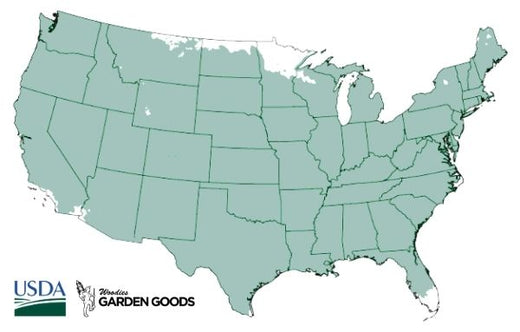
| Hardiness Zone: | 4-9 |
|---|---|
| Mature Height: | 60 to 80 Feet |
| Mature width: | 30 to 40 Feet |
| Classification: | Broad-leaved deciduous tree; shade tree |
| Sunlight: | Full sun |
| Habit: | Upright |
| Foliage: | Dark green, golden yellow in fall |
| Flower Color: | Yellow with orange band |
| Pruning Season: | No pruning needed |
| Soil Condition: | Any well drained soil |
| Water Require: | Water well until established |
| Uses: | Tolerates moist soil and full sun. Full sun brings out the best fall color. Will adapt to drier sites |
How to Care for Tulip Poplar
Before you buy a Tulip Poplar Tree, make sure to read about the recommended care instructions to keep this plant healthy and thriving.
How often do I water my Tulip Poplar Tree?
After back filling and lightly compacting the 50/50 mix of existing soil and compost give the Tulip Poplar Tree a good deep watering. This is not to be rushed. Most of the water you put on the plant at first will run away from the plant until the soil is soaked. A general rule of thumb is to count to 5 for every one gallon of pot size. For example a one gallon pot would be watered until you count to 5 a three gallon pot would be 15 and so on. Check the plant daily for the first week or so and then every other day there after. Water using the counting method for the first few weeks.
What type of mulch should I be using for my Tulip Poplar?
We highly recommend that you mulch your Tulip Poplar Tree with either a ground hardwood mulch or a ground cypress mulch depending on your local availability. Any type of mulch will do but cypress or hardwood mulch will be of a higher quality and provide better nutrition overall as they breakdown. Mulching helps to keep weeds away which will compete with your new investment for water and nutrients. A 2 to 3 inch layer of mulch is sufficient but remember to take care not to cover any part of the stem of the plant with mulch. Its better to leave a one inch gap of space between the mulch and the stem or trunk of the plant.
How do I plant my Tulip Poplar Tree?
We suggest when planting your newly purchased Tulip Poplar Tree plants that you dig a hole twice as wide as the root system but not deeper. The most common cause of plant death after transplanting is planting the new plant to deep. A good rule is that you should still be able to see the soil the plant was grown in after back-filling the hole. Depending on the quality of your existing soil you may need to add a locally sourced compost or topsoil to the back-fill soil. We do not recommend using straight topsoil or compost as a back-fill soil because more times than not these products will retain entirely to much moisture and will cause the root system to rot. Adding compost or topsoil will help the young feeder roots of Tulip Poplar Tree to spread through the loose, nutrient rich soil, much easier than if you used solely the existing soil which more times than not will be hard and compacted.
What type of fertilizer should I use with a Poplar Tree?
Trees such as Tulip Poplar Tree grow best if they are fertilized lightly in the spring once frost has passed with a well-balanced, extended-release, fertilizer such as espoma Tree-tone. Fertilize Tulip Poplar Tree again 6 to 8 weeks later to encourage denser foliage or faster growth of young trees.Either chemical fertilizers or organic matter can be used successfully with Tulip Poplar Tree. Since an organic method of applying manure and/or compost around the roots, produces excellent results and also improves the condition of the soil, this would be an excellent first line of attack. Organic additions to the soil can also be combined with a shot of chemical fertilizer for maximum effect.
If chemical fertilizers are used on your tree, applying a slow-release, balanced fertilizer once a year is probably the simplest solution. A fast release fertilizer such as a 10-10-10 will work just as well if applied twice during the early spring and early summer.Don’t fertilize Tulip Poplar Tree after August. Fall is the time for plants to begin preparing for dormancy. Fertilizing at this time may stimulate new growth that will be too tender to withstand the winter. In the South, a late May application and another in July would be about right. More northern areas may wish to fertilize only once in June or July.
The amount of chemical fertilizer used per plant will vary with the size of the plant and it’s root system. (Use less fertilizer for gardenias in a container.) Over-fertilization can be much more detrimental than under-fertilization. “Fertilizer burn” can occur when too much fertilizer is applied, resulting in a drying out of the roots and damage or even death of the Tulip Poplar Tree. Never fertilize a plant with a chemical fertilizer if the plant looks sick or wilted. If a plant is struggling due to a disease or root problems, the fertilizer will only add stress to it’s life. Try to cure the problem before adding fertilizer.










